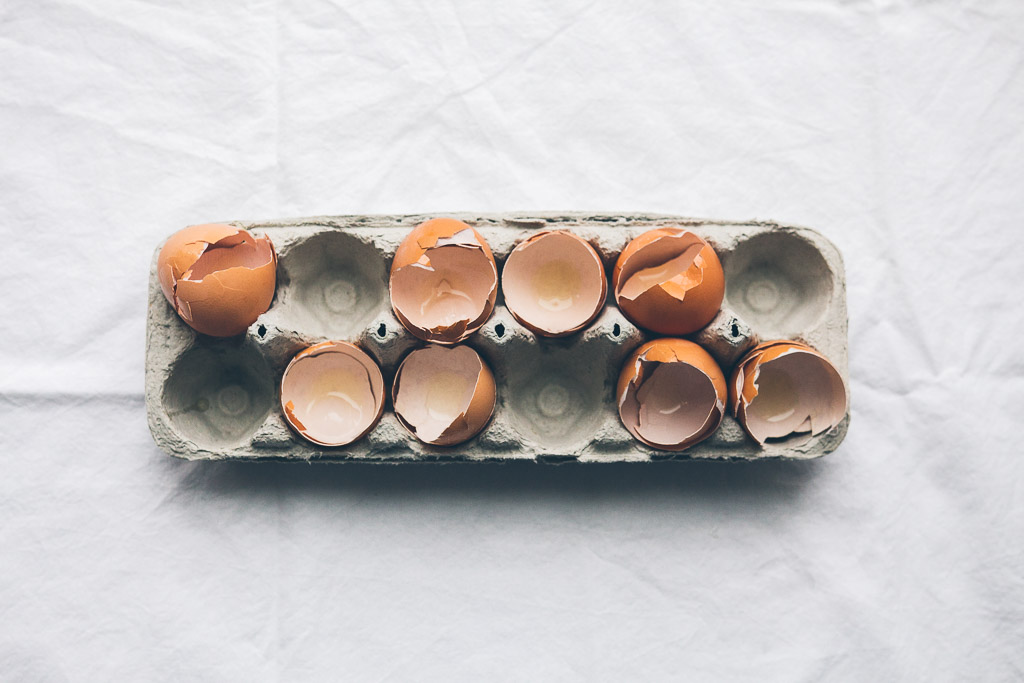Pastéis de Tentúgal are Portuguese pastries that originated in Tentúgal, a tiny town halfway between Lisbon and Porto. These pastéis, invented by Carmelite nuns in the 16th century, are packets of thin, flaky pastry filled with a rich egg custard and dusted with powdered sugar.
I have to be honest though; I’ve never set foot in Tentúgal. I tasted these pastries at a traditional desserts workshop that was part of my Portugal culinary tour. They were crispy and buttery and eggy and just the right amount sweet. They immediately became my favorite new food discovery.
I also love the history of these egg-based confections:
After colonizing Brazil and Madeira in the 16th century, Portugal began importing a steady stream of sugar (formerly a luxury destined only for the wealthy) from their plantations abroad. At this time, there happened to also be a large number of convents in Portugal using egg whites to starch their habits. All those elaborately starched wimples meant a lot of nuns with a lot of extra egg yolks on their hands. One of those nuns had the brilliant idea of combining the surplus egg yolks with the newly abundant sugar, and the classic eggy, sweet Portuguese convent pastry was born!
I like to imagine the sisters working away in their convent kitchens, inventing new confections to use up their stockpile of yolks and dreaming up names for their heavenly creations: barrigas de freira (nun’s bellies), toucinho do céu (bacon from heaven), papos de anjo (angel cheeks or angel breasts, depending on who you ask).
The Carmelites were especially inventive in dreaming up the Pastéis de Tentúgal. It seems that in addition to egg yolks, the sisters had a lot of time on their hands because the traditional version of the sweet involves hand-stretching a gigantic disk of dough into paper-thin sheets that are rolled around doce de ovos (a sort of egg and sugar custard) and baked.
I am certain that the traditional version with it’s miraculously thin pastry case is divine. But since the chances of me learning to make this super labor-intensive dough from those who hold the secret recipe are slim, and the chances of you deciding to make it at home are even slimmer, I’m going to share the version of the recipe I learned, which relies on phyllo dough for the pastry case. I hope that's alright with you. :)
I learned to make this version of Pastéis de Tentúgal from chef Orlanda Monteiro. Once you get the hang of working with the phyllo and learn how not to overfill your pastries (which I definitely did in my first batch), these are remarkably easy to make.
And the results are stellar. The finished pastries stand on their contrasts; the shatteringly crisp shell houses a creamy egg filling that is both rich and airy. Which means you could eat about a dozen of them. Or I could anyway. My official testers (my mother and the baristas at my favorite coffee shop) gave these an enthusiastic thumbs up. I hope you will, too.
As always, if you have any questions about technique or ingredients (or if you just want to to let the world know what you think of this recipe!), give a shout-out in the comments below.
- 11 oz (generous 1 ½ cups) granulated sugar
- 1 cup water
- 10 large egg yolks
- 12 sheets phyllo dough (you might need one or two extra if any of your sheets tear)
- 4 oz (8 tablespoons) unsalted butter, melted
*Notes: For best results, thaw your phyllo dough overnight in the fridge. To keep it from drying out, I cover the phyllo dough I’m not working with at the moment with a sheet of plastic wrap and then a barely damp dish towel.
- If you overfill your pastries, they will burst in the oven. The key is to only use one tablespoon of filling per pastry then to roll them loosely. Finally, when you turn the edges up, leave about ½ inch empty space on each side of the filling. Leaving a little extra room inside the pastry allows the egg filling to expand without leaking.
- Egg whites (unlike yolks) freeze beautifully. If you want to use them later to make meringue, be sure to separate your eggs carefully and avoid getting any yolk in the whites. To thaw, place the frozen egg whites in the fridge overnight.
- Like many Portuguese pastries, these are especially good straight out of the oven, served with an espresso.
Combine the sugar and water in a medium saucepan. Bring to a boil over medium-high heat. Once the sugar is dissolved, do not stir the syrup. Cook until the syrup has thickened enough to come off a spoon in a thick stream. This should take about 8-10 minutes. If you want to be more precise, the syrup should read about 200°F on an instant-read thermometer. Set aside to cool for a minute or two.
While the syrup is cooling, place your yolks in a large bowl. Whisk to combine then slowly drizzle in a very thin stream of the hot syrup, whisking constantly. The idea is to temper your eggs, or gradually heat them enough to add them to the hot liquid without scrambling them. Continue to gradually add the syrup while whisking vigorously. The more your eggs warm up, the faster you can add the syrup. When you’ve added all the syrup, transfer the egg mixture back to the saucepan and place over medium-low heat. Cook, stirring or whisking constantly until the mixture is thick and creamy and resembles sabayon or lemon curd. Whisking is faster and yields a fluffier result, so that’s the method I prefer. Either way, be sure to occasionally scrape the bottom and corners of the pan with a flexible, heat-proof spatula to make sure there’s no egg scorching going on down there.
Remove from the heat and strain the egg mixture through a medium-mesh sieve into a medium bowl (the sieve will remove any little bits of hard-cooked egg and make sure your filling is smooth). Place a sheet of plastic wrap directly on the surface of the egg custard (to prevent a skin from forming) and refrigerate until set, at least 2 hours and up to 2 days.
When you’re ready to assemble and bake the pastéis, preheat your oven to 400°F.
Stack two sheets of phyllo on a large, clean work surface. Fold the stacked sheets in half widthwise (short end to short end) and cut along the fold with sharp knife. Stack the four sheets of phyllo on top of each other, fold widthwise and cut along the fold again. You will now have eight rectangles of phyllo dough measuring roughly 7x9 inches. Place six of the sheets under your towel with the rest of the phyllo and leave two on your work surface.
Using a pastry brush, lightly butter the first rectangle of phyllo. Place the second sheet directly on top and lightly butter as well. Position the phyllo sheets so one of the long edges is closest to you, then place one tablespoon of the chilled egg filling in the middle of this long edge, about ¾ inch in from the edge. Loosely fold the phyllo over the filling to create a sort of flat tube (it will puff as it cooks). Use your fingers to make an indentation on both sides of the filling, leaving about ½ inch room for the filling to expand within the tube. Brush the top of the pastry with butter, fold the ends up, pinching the seam gently so they won’t open in the oven and butter the ends you’ve just folded up. Place on a parchment-lined sheet pan and repeat with the rest of the phyllo and filling.
Bake the pastéis for 12-14 minutes, until they have puffed and the tops are golden brown. Cool slightly before sprinkling with powdered sugar. The pastéis can be served warm or at room temperature.














